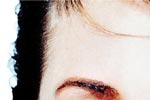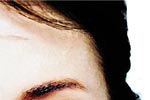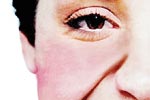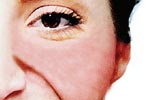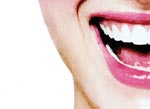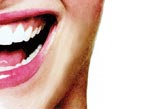 |
|
| Lingual braces | Invisalign | Clear Aligner | Metal braces | Clear braces |
Damon braces |
Clarity braces |
Orthognathic Surgery |
Orthodontics Braces |
|
language |
l |
|
Orthodontic mini-screw is a small metal screw which is inserted through the gum into the jaw bone to act as an anchor
to help move poorly positioned teeth. Some people also call them micro-screws, mini-implants or temporary anchorage devices (TADs).
In order to move poorly positioned teeth, the other surrounding teeth usually provide a stable support for the force applied by the brace.
It is not always possible to use these teeth and sometimes the force may cause the wrong teeth to move. In such cases,
a mini-screw can be used to act as an ‘anchor’ to help with straightening your teeth and closing up gaps.
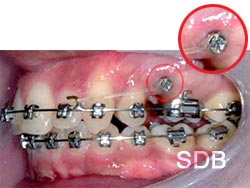
In planning the biomechanical aspects of orthodontic treatment for a specific patient, it is imperative that the orthodontist consider
not only the forces required for the necessary tooth movement to achieve the patient’s objectives, but also the undesired tooth movement
that may occur in response to these forces. In the past, orthodontists have searched for the perfect anchorage in order to minimize
these undesired tooth movements. Headgear, elastics, adjacent teeth, and any number of appliances have been suggested as anchorage in the past;
however, the main drawback was that they all relied on patient compliance in order to be successful.
Implant anchorage has burst onto the clinical orthodontic scene in order to assist the orthodontist in controlling tooth movement.
The primary advantage over the previously mentioned forms of anchorage is that implants provide skeletal anchorage,
which is undoubtedly more predictable and stable than methods requiring patient compliance. While there are many types of implants available,
this article will examine three categories that may be useful to today’s orthodontist: cylindrical, miniplate and miniscrew.
Traditional miniplate implants have been used by oral surgeons for decades and are highly predictable in their success after placement.
These plates are placed and retained in the skeletal anchorage unit by screws engaging the cortical bone. The most common areas for
placement for orthodontic use are in the zygomatic strut in the maxilla and the buccal aspect of the body of the mandible.
Miniplate anchorage may be effective in controlling anchorage in the vertical and anterior-posterior planes, and therefore offers
the orthodontist a particular advantage in treating skeletal open bite malocclusions. Although an 8-week healing period was initially recommended,
there is debate in the current literature as to whether immediate loading of miniplates may be possible. Once in place, true molar intrusion
of either maxillary or mandibular molars may be achieved by connecting elastic thread, rubber bands, ligatures, or niti coils between the molar(s)
and the anchorage unit. A disadvantage to using miniplates as anchorage is that a full thickness flap is required for their placement,
and the plates must be retrieved after termination of treatment. Miniplates do offer advantages over other implant options in that they do not move,
they are low profile, and the attachment for clinical use may be easily accessed for adjustment by the orthodontist.
Miniscrew implants have recently become a very hot item with regard to implant anchorage, primarily based on their ease of placement and retrieval. These screws may be placed by the dentist using only local anesthetic and retrieved, in some cases, using only topical anesthetic . Once placed, the miniscrew is available for immediate load placement in conjunction with the specified treatment plan. Since miniscrews are retained in the interdental and interradicular alveolar crest, osseointegration is not required. However, since osseointegration is not required, the possibility exists that minor movement of the miniscrews (loss of anchorage) may occur. A final important consideration in the placement of miniscrews is the precise placement between the roots of adjacent teeth and the risks that may be associated with such a technique.
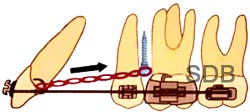
• A mini-screw can be placed at any time during your brace treatment.
• Local anaesthetic is used to numb the gum. You may also be asked to use an anti-bacterial mouthwash.
• A hole may be drilled into the jaw first to insert the screw or it may be gently inserted directly into the bone.
• You may experience an odd pressure sensation as the screw is inserted.
• Sometimes a plastic device is used as a guide to help place the screw in exactly the right position.
• A brace can be attached to the mini-screw either straight away or at a later visit in order to start tooth movement.
• Mini-screw insertion itself is not painful. You may have a mild ache from the area for 24 hours after the anaesthetic wears off.
• If you experience any discomfort, take what you would normally have for a headache e.g. paracetamol, ibuprofen.
• Expect your teeth to feel slightly tender for 3-5 days following the adjustment of your fixed brace.
Without question, implants have changed, and will continue to change, the way orthodontists approach tooth movement.
Movements of teeth that were previously thought difficult—if not impossible—may now be possible using implants as anchorage.
As I have described, there are a number of different types of implants being commonly used; however, there is no perfect implant.
The orthodontist and oral surgeon must carefully consider and weigh the options for implants and their advantages and disadvantages
to determine which implant to utilize for each individual patient. Regardless of personal preferences of surgeons and orthodontists,
implants have provided orthodontics with a new horizon that is exciting for patients and doctors alike.
• Gently brush around the mini-screw twice daily using a fluoride toothpaste and a small headed toothbrush.
• Do not use an electric toothbrush around the mini-screw.
• Don’t “fiddle” with it with your fingers or tongue!
• Use a chlorhexidine mouthwash to rinse around the mini-screw twice daily for the first 5 days.
• The mini-screw may feel a little bit loose at first. If the screw becomes very loose or the brace becomes detached, contact your orthodontist immediately.
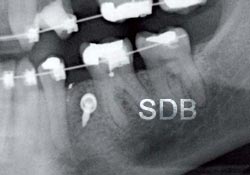
HOME
l SERVICE
l DENTISTS
l TECHNOLOGY
l FACILITIES
l ABOUT US
l SITE MAP
PROMOTION
l PRICE&DURATION
l CONSULTATION
l FAQ
l LINKS
l MAP
l TESTIMONIALS
l OUR LAB
l RESOURCES
DENTAL BRACES
l TEETH WHITENING
l IMPLANT DENTISTRY
l ENDODONTICS
l OPERATIVE DENTISTRY
l SEDATION DENTISTRY
COSMETIC DENTISTRY
l PROSTHODONTICS
l PERIODONTICS
l ORAL SURGERY
l PAEDODONTICS
l GP & ORAL EXAM
l OCCLUSION
AIR-FLOW
l DENTAL LASER SYSTEM
l ENDODONTIC EQUIPMENT
l DENTAL UNITS
l OPERATING LAMP
l WHITENING SYSTEM
CT SCAN
l DENTAL MICROSCOPES
l NOBEL GUIDE
l STERILIZATION ROOM
l X-RAY
l ELECTROSURGICAL SYSTEM
l MINIPIEZON
DENTAL OFFICE
l DENTAL CLINIC
l COSMETIC DENTISTRY
l COSMETIC DENTIST
l TEETH BLEACHING
l TOOTH WHITENING
DENTAL CROWNS
l DENTAL IMPLANTS
l DENTAL TREATMENT
l DENTAL IMPLANT
............................................................................................................................. Copyright© 2004 SILOM DENTAL BUILDING. All Rights Reserved.
Local Call : 0 2636 9092-5, International Call : (+) 66 2636 9091, (+) 66 2636 9097
e-mail :silomdental@silomdental.com
Dental Braces, Orthodontics, Lingual Orthodontics, Invisalign, Orthodontist, Orthodontic Dental Clinic Bangkok, Orthodontic Dental Clinic Thailand
